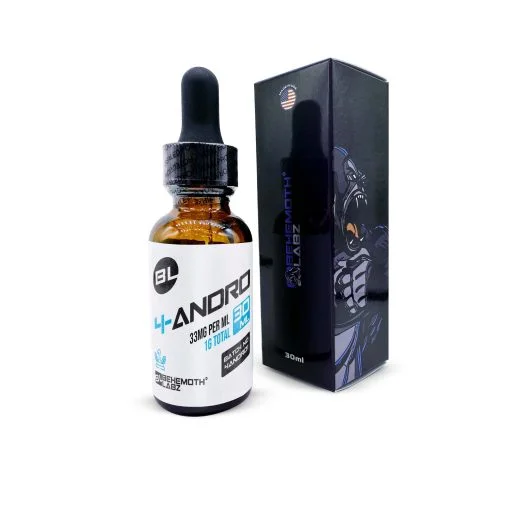Peptides
GHRP-2 vs. GHRP-6: Similarities, Differences, And Mechanism Of Action
GHRP-2 and GHRP-6 have sparked interest among researchers due to their potential to modulate pathways associated with growth hormones in research models during trials. But how different or similar are they? Are they the same compounds? If yes, how? If they are not identical, how do they differ from each other?
From similar mechanisms to key similarities and distinctions, this scientific review reveals everything researchers want to know before choosing between GHRP-2 and GHRP-6. Read this blog and gain insight into the world of these peptides!
What Is GHRP-2?
GHRP-2, short for Growth Hormone-Releasing Peptide-2, is a synthetic hexapeptide. It belongs to the growth hormone secretagogue category. Meaning it is one of those hormones that has the potential to influence parameters closely associated with the secretion of growth hormones.
According to animal model studies, GHRP-2 stimulates GH release by binding to ghrelin receptors (GHS-R1a). This means the influence on growth hormone secretion occurs naturally inside the system of animal models.
What Is GHRP-6?
GHRP-6 is also a synthetic hexapeptide that stands for Growth Hormone-Releasing Peptide. It is one of the famous growth hormone secretagogues. The growth hormone secretagogues are those compounds that have the potential to stimulate the patterns linked with growth hormone secretion. GHRP-6, being a growth hormone secretagogue, also influences the pathways associated with growth hormone production in animal models.
This influence on growth hormone may modulate various pathways in research models during trials. These pathways are linked with muscle hypertrophy, bone integrity, and adipose tissue reduction.
Working Mechanism Of GHRP-2 and GHRP-6
- GHRP-2: After being administered to organisms, GHRP-2 potentially reaches the pituitary gland, located in the frontal area of the head. Upon reaching its target, it may bind with ghrelin receptors, which are involved in hunger signaling and modulate the pathways linked with growth hormone secretion. In return, the growth may affect muscle hypertrophy, skeletal integrity, and adipose tissue loss in research models.
- GHRP-6: The working mechanism of GHRP-6 is similar to that of the GHRP-2 compound. After being administered to research subjects, GHRP-6 may stimulate the ghrelin hormone by binding with ghrelin receptors. The ghrelin receptor activation, in turn, stimulates patterns associated with growth hormones in research models. The growth hormones from the pituitary gland may affect muscle hypertrophy, bone integrity, and adipose tissue reduction in subjects during clinical trials.
Similarities Between GHRP-2 And GHRP-6
Here is the list of key similarities between GHRP-2 and GHRP-6:
Similar Type Of Compound:
Both GHRP-2 and GHRP-6 are similar types of hexapeptides. They consist of small chains of amino acid molecules, which are connected by peptide bonds.
Mechanism Of Action:
They have similar mechanisms of action in research models during clinical trials. According to animal model research trials, they bind with ghrelin receptors, stimulating ghrelin hormone secretion. In return, the ghrelin hormones may modulate growth hormone secretion in research subjects.
Similar Main Function:
These peptides demonstrate a similar primary function during clinical trials on animal models. Their main function is to influence the pathways linked with the secretion of growth hormones in research models. This primary function may be demonstrated when they bind with ghrelin receptors, stimulating ghrelin hormones.
Method Of Administration:
They are similarly administered subcutaneously or through intramuscular injection to preclinical models during laboratory experiments.
Legal Status:
Legally, they share a similar status. For instance, neither of them has been approved by the Food and Drug Administration for human use. However, they may be used for laboratory research trials.
Similar Potential Benefits of GHRP-2 And GHRP-6
Here are the key similar benefits these peptides may demonstrate in organisms during clinical trials:
Potential Muscle Hypertrophy:
Both GHRP-2 and GHRP-6 may influence the pathways linked with muscle hypertrophy in organisms. According to preclinical trials, these peptides modulate growth hormone secretion patterns. In return, the growth hormone demonstrates the potential to impact muscle hypertrophy in research models during preclinical trials.
Potential Adipose Tissue Reduction:
Adipose tissue reduction is another potential benefit these peptides may demonstrate in research subjects. For potential adipose tissue reduction, these peptides affect the parameters associated with growth hormones in research subjects. In return, the growth hormone may improve lipolysis and potentially reduce adipose tissue in organisms during trials.
Bone Integrity:
One of their combined potential benefits is improving bone integrity in research subjects during preclinical trials. For bone integrity, these peptides influence the indicators linked with growth hormones in organisms. In return, the growth hormones may improve osteoblast cell activities, improving bone integrity in research subjects.
Key Differences Between GHRP-2 And GHRP-6
Here are the key differences between GHRP-2 and GHRP-6:
Appetite Stimulation:
According to preclinical trials, GHRP-2 may have mild to moderate effects on appetite stimulation. On the other hand, GHRP-6 may strongly influence the pathways linked with appetite stimulation in organisms during trials.
Potency For Growth Hormone Release:
GHRP-2 has shown more potency towards the patterns linked with the secretion of growth hormones during preclinical trials. On the other hand, GHRP-6 has shown less potency towards growth hormones in organisms during trials.
Hunger Response Time:
According to animal model studies, the hunger response time of GHRP-2 is slow compared to GHRP-6. The GHRP-2 may slowly cause hunger. On the other hand, GHRP-6 may cause rapid hunger in organisms.
Water Retention:
The GHRP-2 is less likely to cause water retention issues in organisms during preclinical trials. Whereas the GHRP-6 is more prone to the problem of water retention in organisms during trials.
Which One Is Best: GHRP-2 And GHRP-6
Both of them are good in their own ways. None of them replaces the other. If a researcher wants to explore the pathways linked with rapid growth hormone secretion, less appetite stimulation, and minimal side effects, then GHRP-2 is the best option for the studies. On the other hand, for moderate influence on growth hormone release with rapid hunger stimulation, GHRP-6 may be used.
In short, the research goals, objectives, requirements, and environment determine the selection between them. First, a researcher is advised to write down research goals, objectives, and requirements, and decide accordingly.
Final Thought
GHRP-2 and GHRP-6 are the two synthetic hexapeptides with the potential to modulate growth hormone-related pathways in experimental models during preclinical trials. They share similarities as well as distinctions. Similar mechanisms of action, methods of administration, and primary functions are the key similarities between them, but their impacts on appetite stimulation differ from each other.
Frequently Asked Questions (FAQs)
What is the best place to buy GHRP-2 and GHRP-6 peptides online?
The best place to buy GHRP-2 and GHRP-6 peptides online is BehemothLabz. It is among the few vendors that have been offering peptides of various kinds for the last decade in the market. This long-established journey has made BehemothLabz a reliable and trustworthy vendor in the market. Moreover, the products are also third-party verified with reasonable prices.
What are the side effects of GHRP-2 and GHRP-6 in research subjects?
The side effects observed during clinical trials on animal models include irritation, injection site reactions, increased hunger, and water retention. These side effects may vary from subject to subject and are dependent on various factors.
Does GHRP-2 increase testosterone in research subjects?
GHRP-2 may not affect the level of testosterone in organisms. It may only modulate the patterns linked with growth hormones in organisms during clinical trials.
What is GHRP-2 used for in research models?
GHRP-2 may be used to influence the parameters associated with growth hormones in organisms. This influence may enhance the secretion of growth hormones, which modulate multiple pathways, including muscle hypertrophy and skeletal health integrity.
Which is better: GHRP-2 or GHRP-6?
Both of them are good in their domains. GHRP-2 may be used to influence growth hormone secretion without appetite stimulation. On the other hand, GHRP-6 is used to modulate growth hormone secretion along with appetite in organisms.
References:
- Cheng, Jeffrey, et al. “Growth hormone releasing peptides: a comparison of the growth hormone releasing activities of GHRP-2 and GHRP-6 in rat primary pituitary cells.” Life sciences 60.16 (1997): 1385-1392.
- Semenistaya, Ekaterina, et al. “Determination of growth hormone releasing peptides metabolites in human urine after nasal administration of GHRP‐1, GHRP‐2, GHRP‐6, Hexarelin, and Ipamorelin.” Drug testing and analysis 7.10 (2015): 919-925.
- Wu, D., et al. “The effects of GH-releasing peptide-6 (GHRP-6) and GHRP-2 on intracellular adenosine 3′, 5′-monophosphate (cAMP) levels and GH secretion in ovine and rat somatotrophs.” Journal of endocrinology 148.2 (1996): 197-205.












